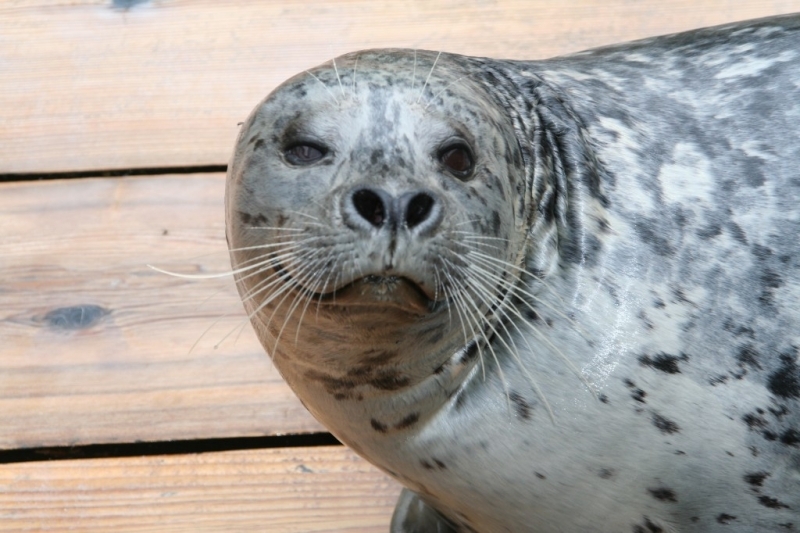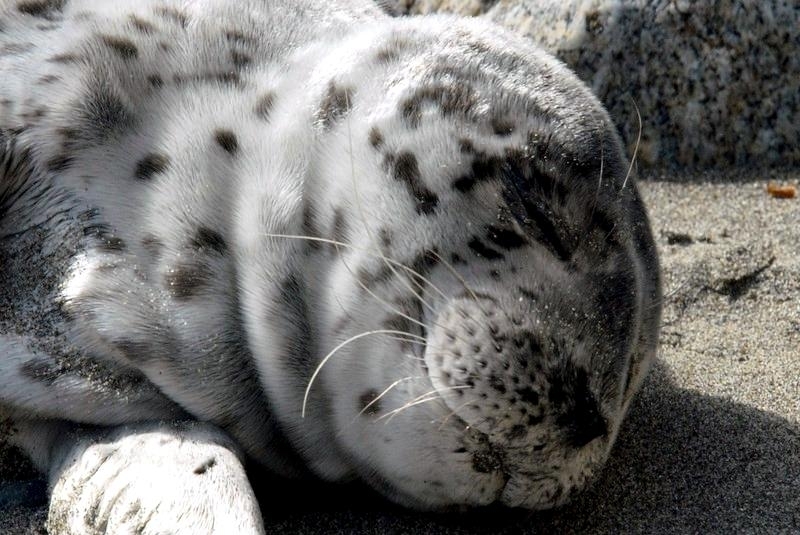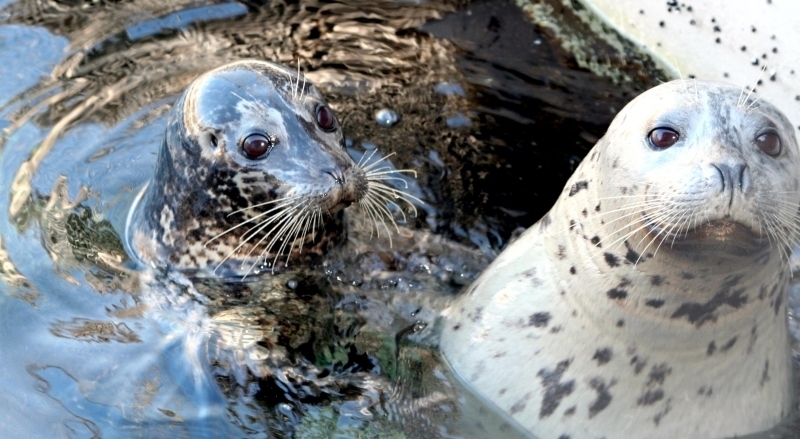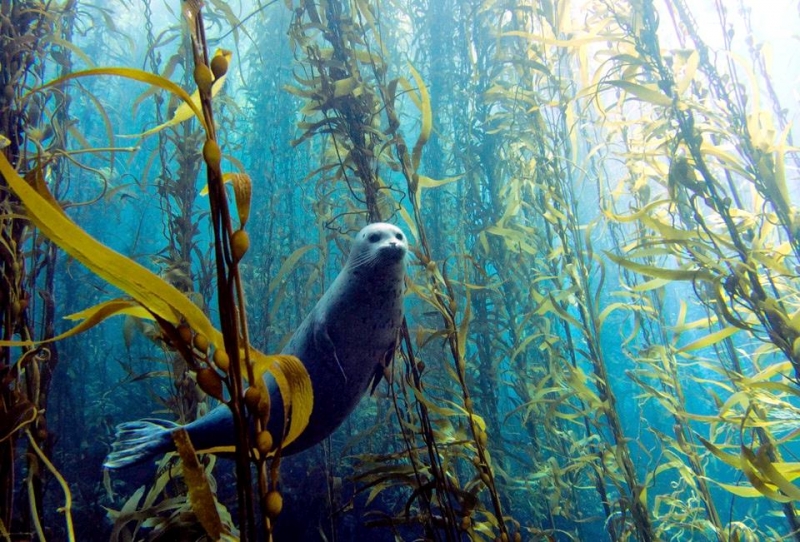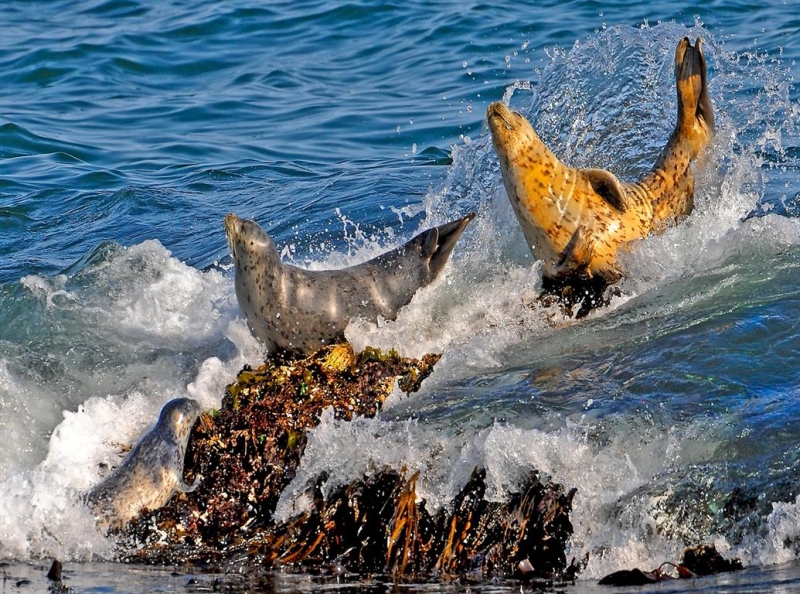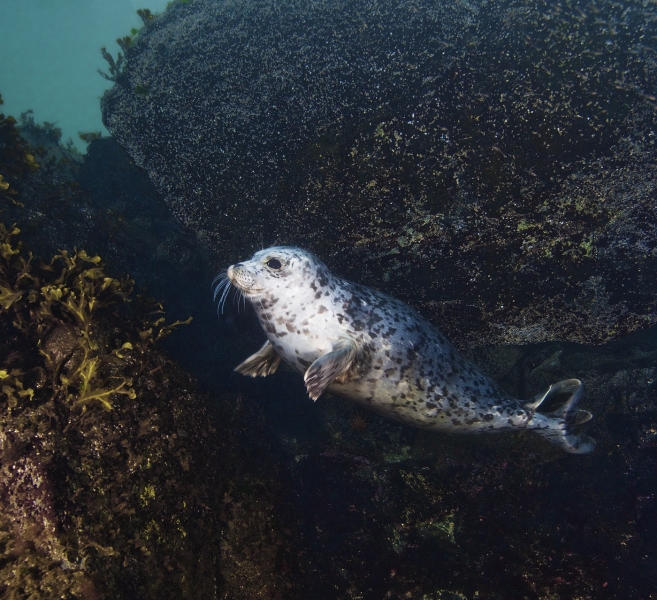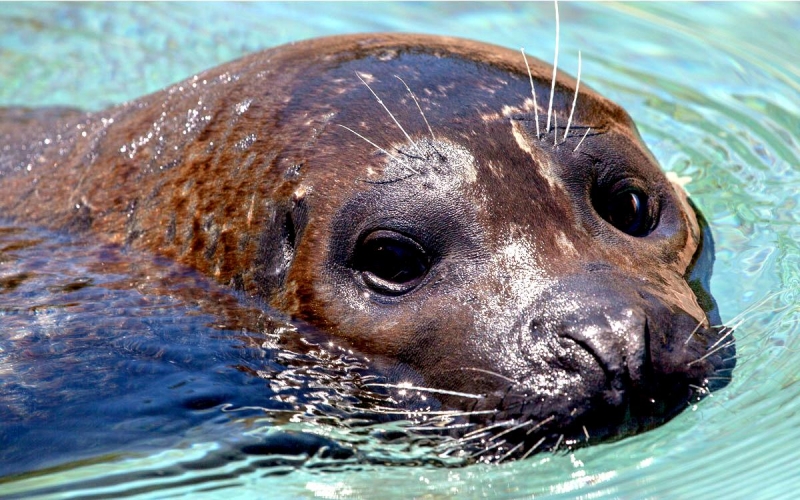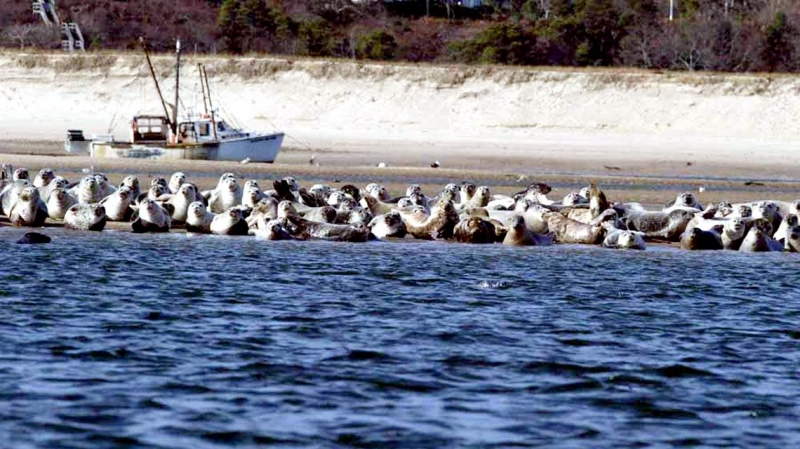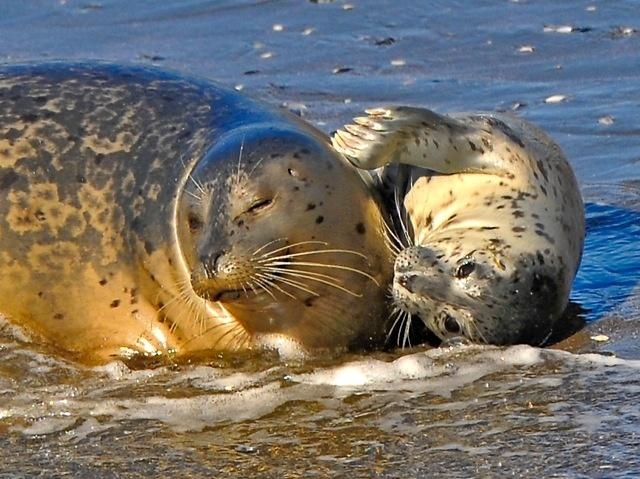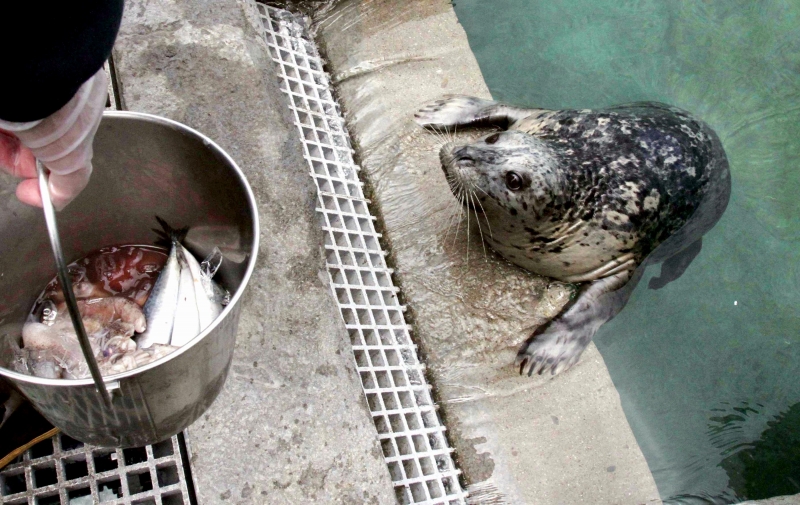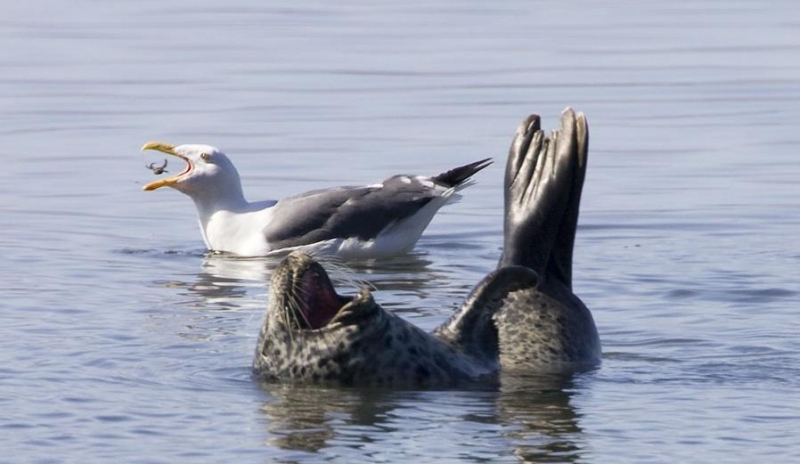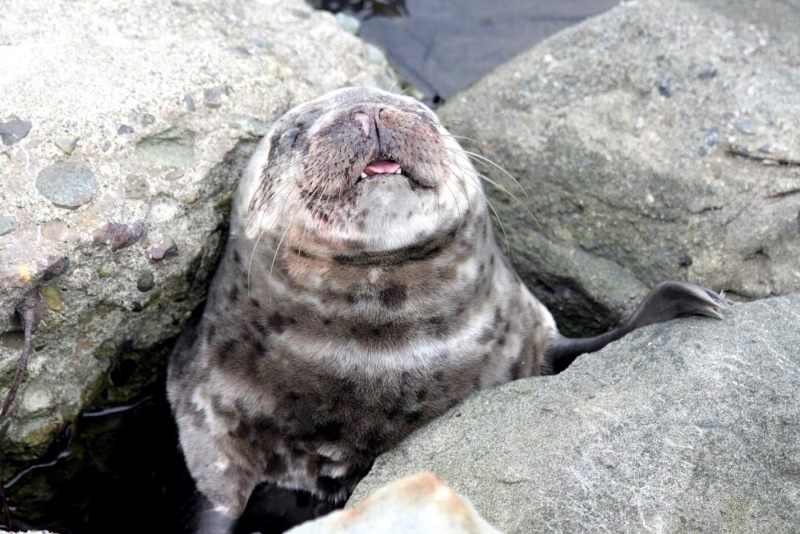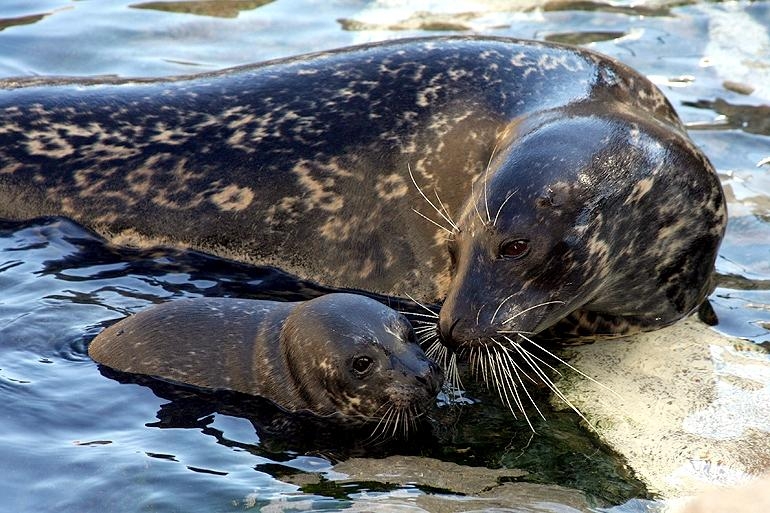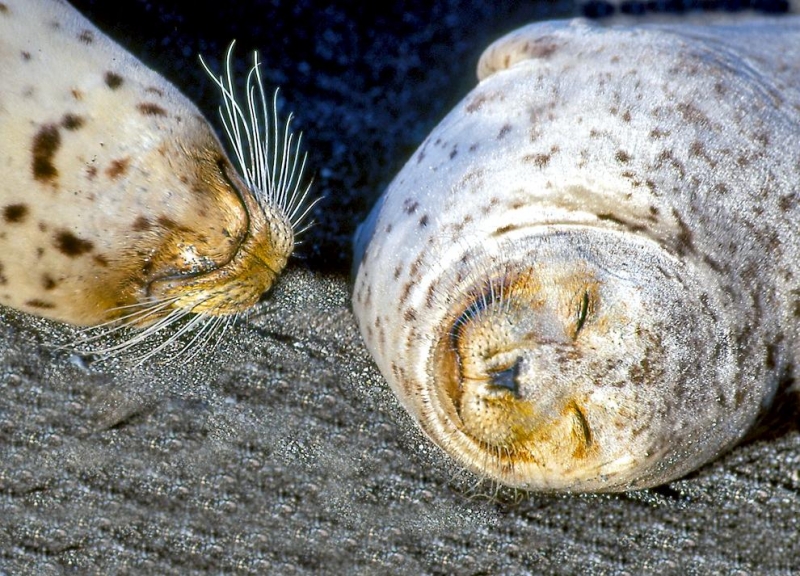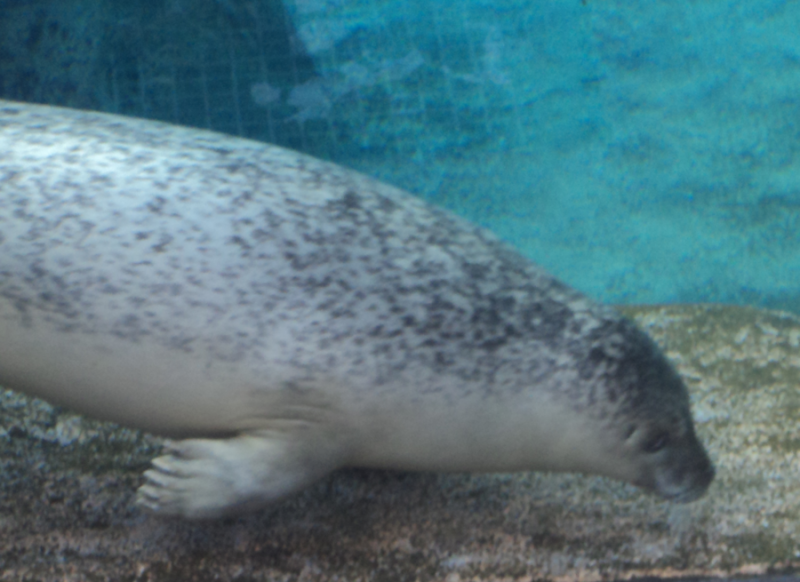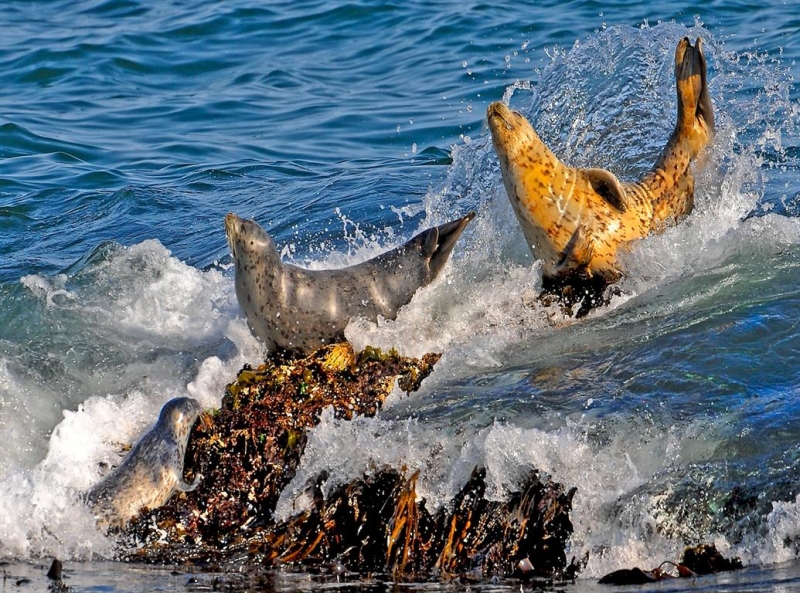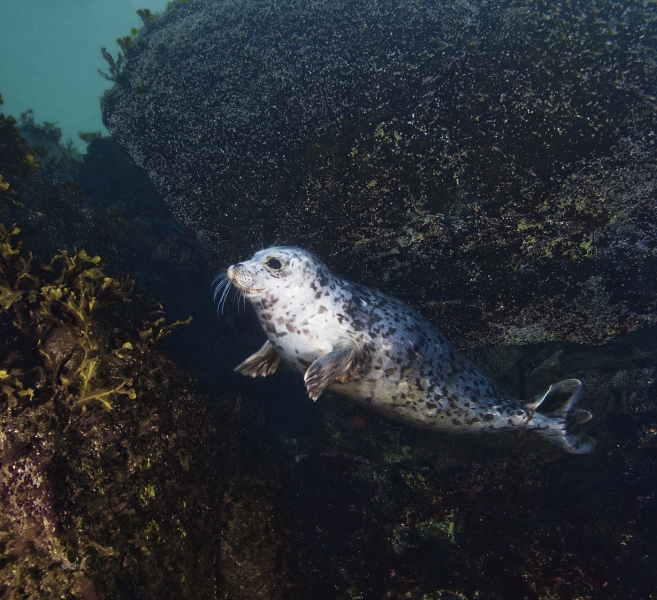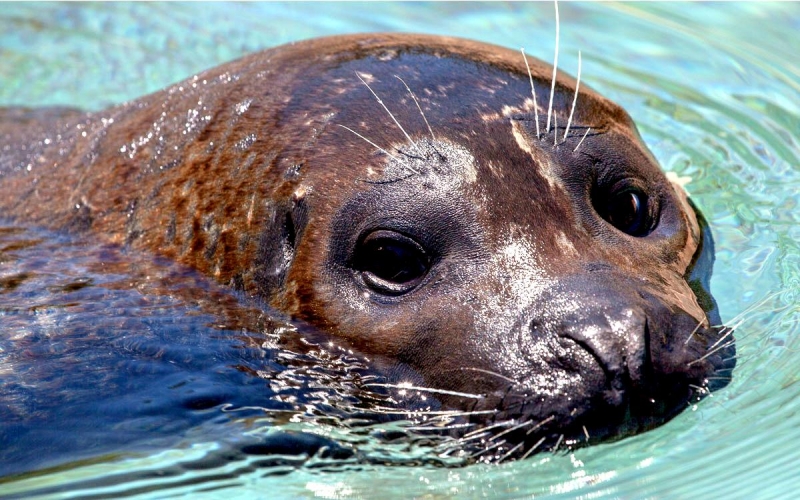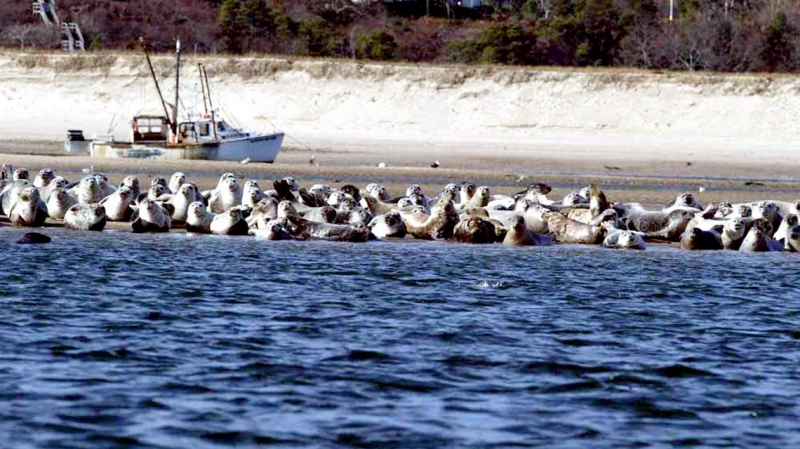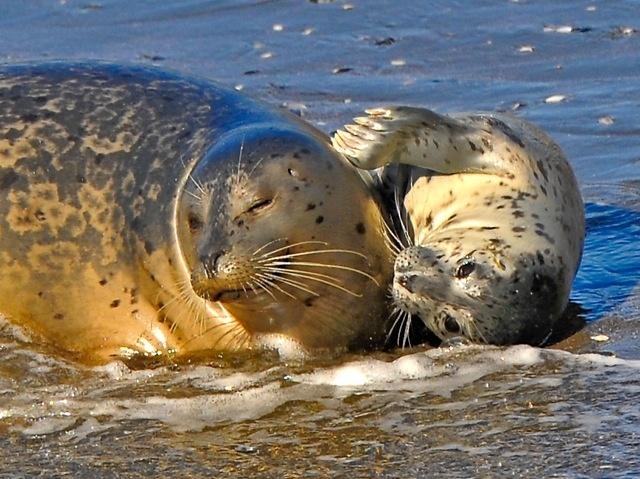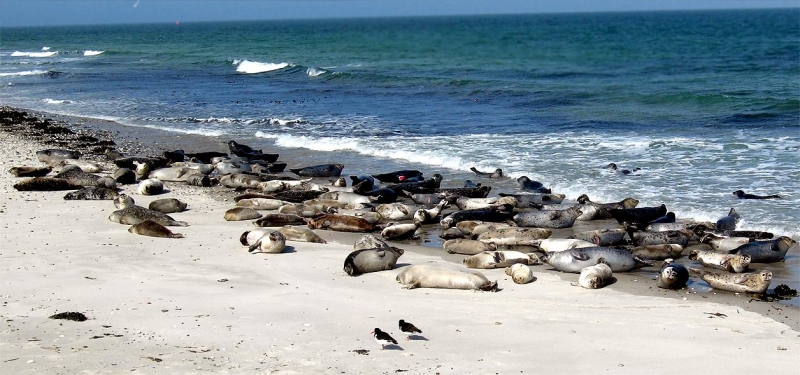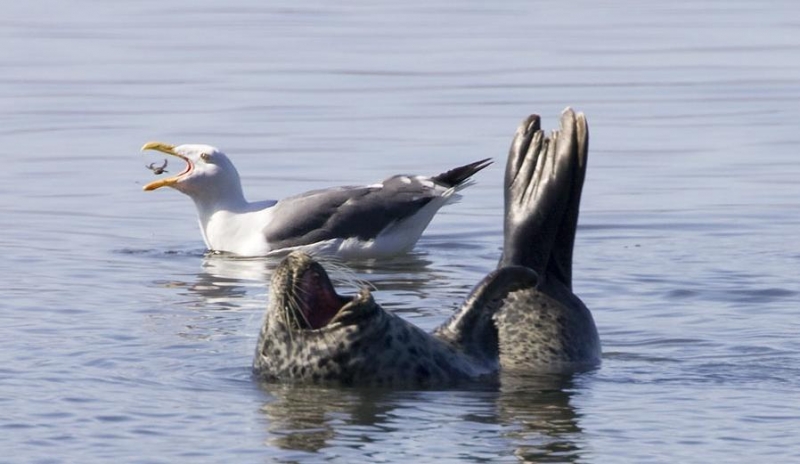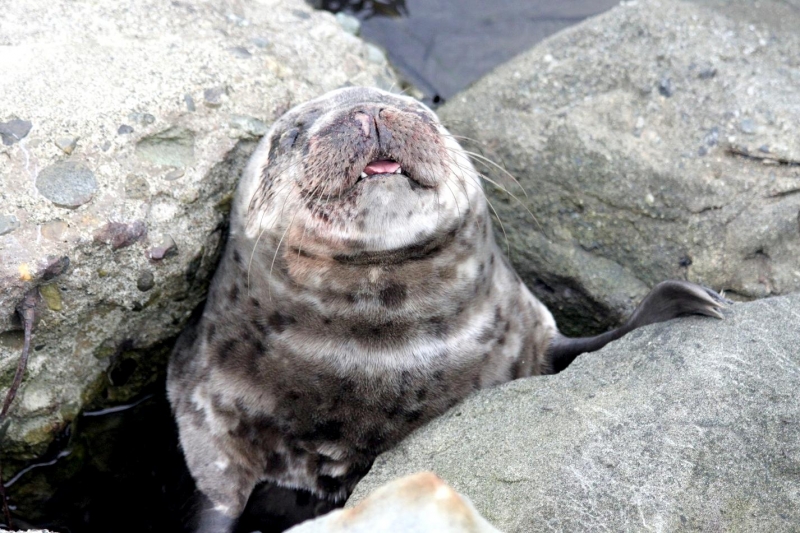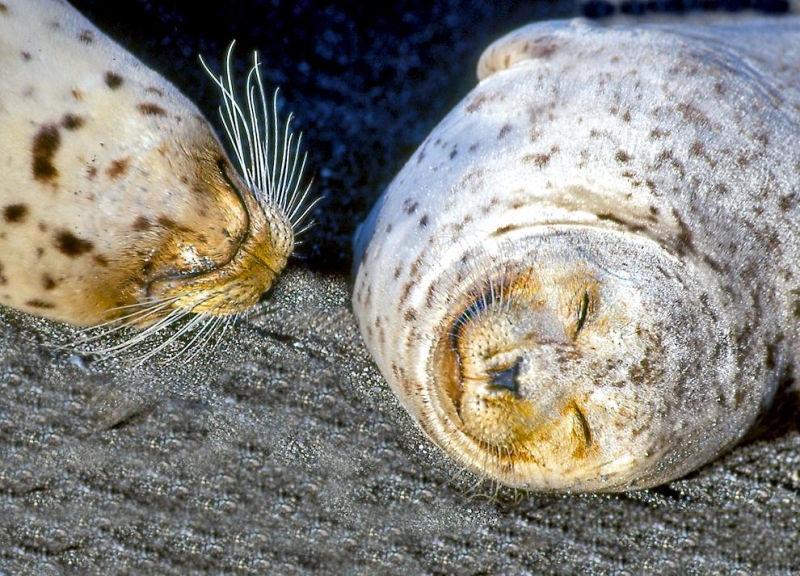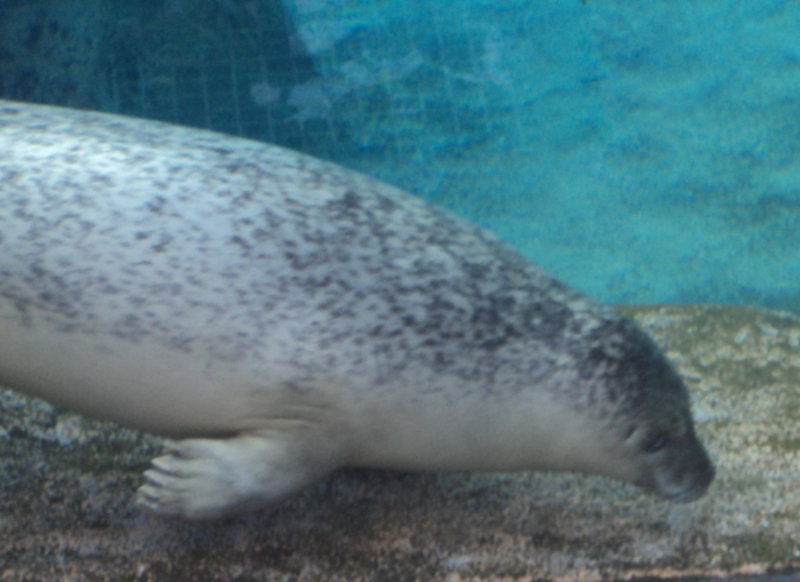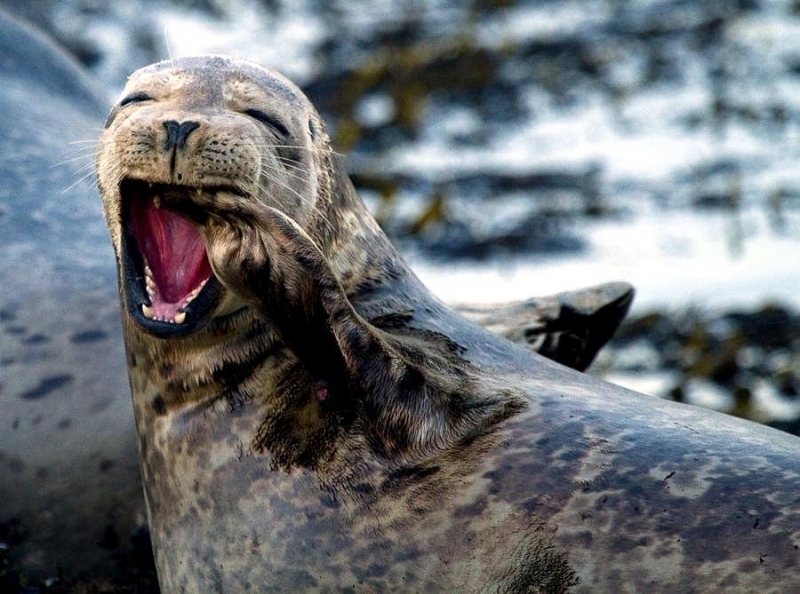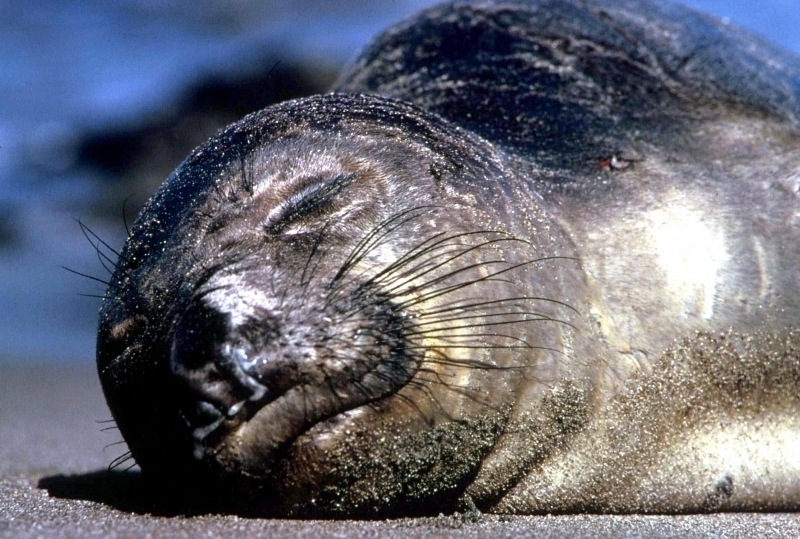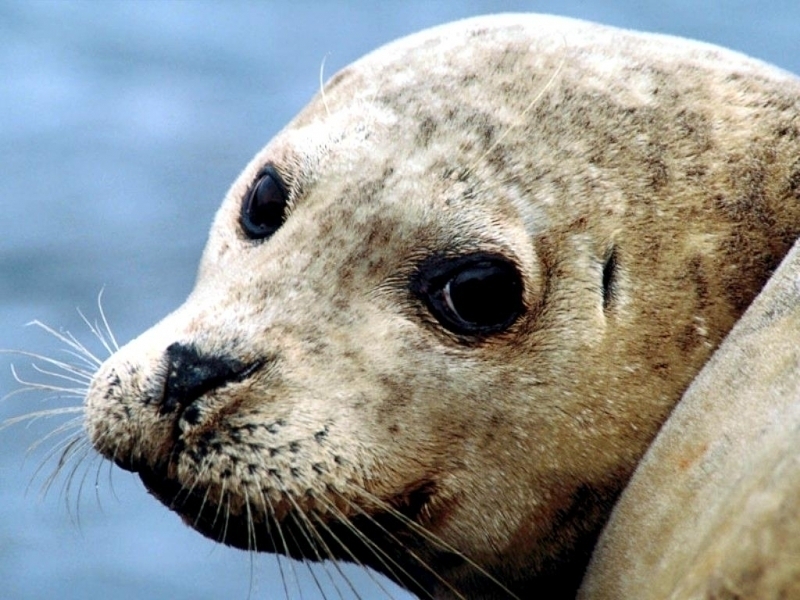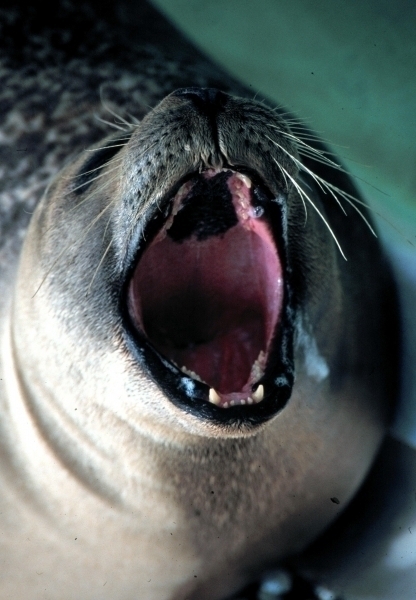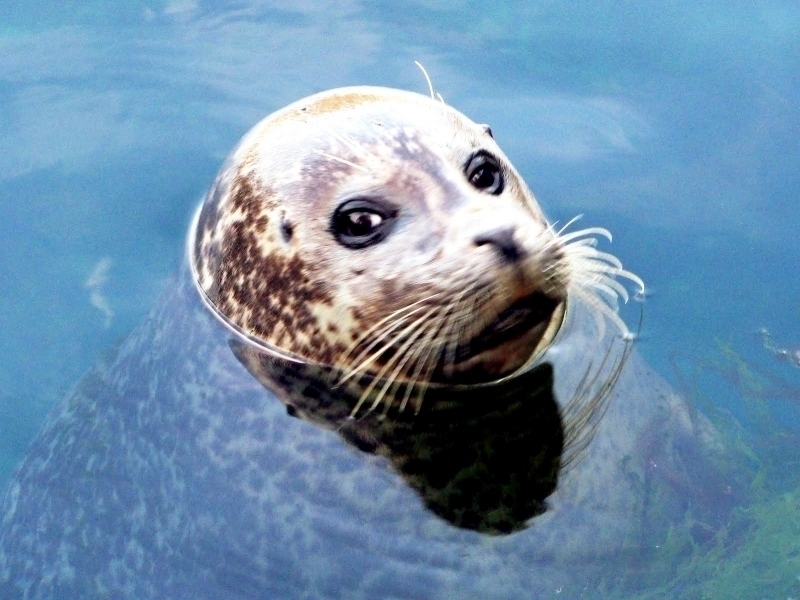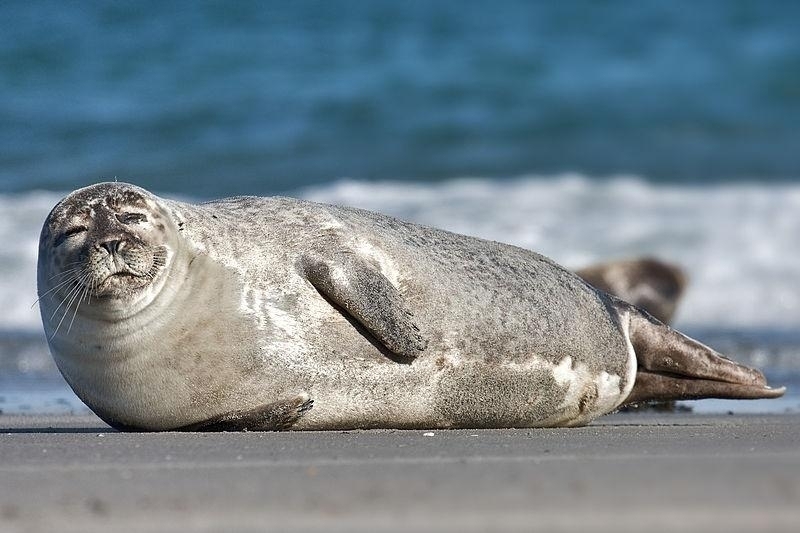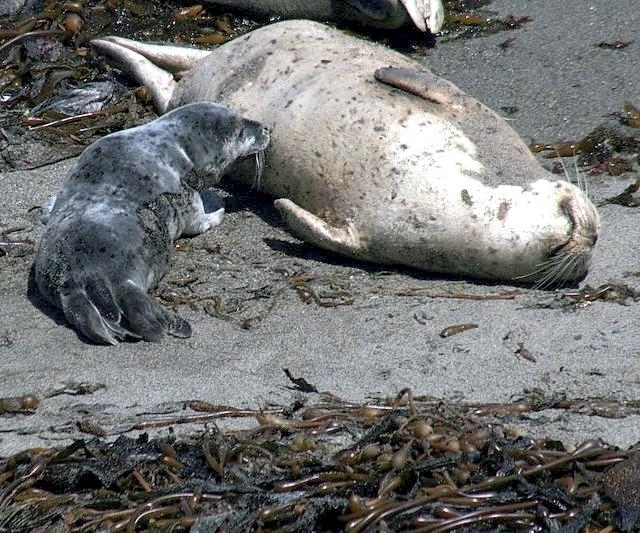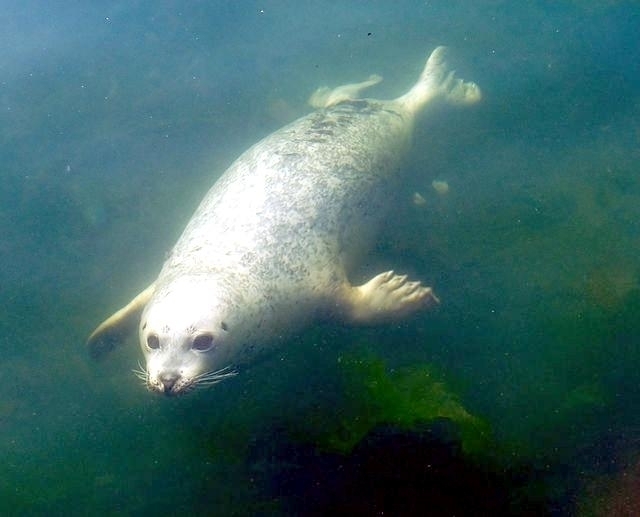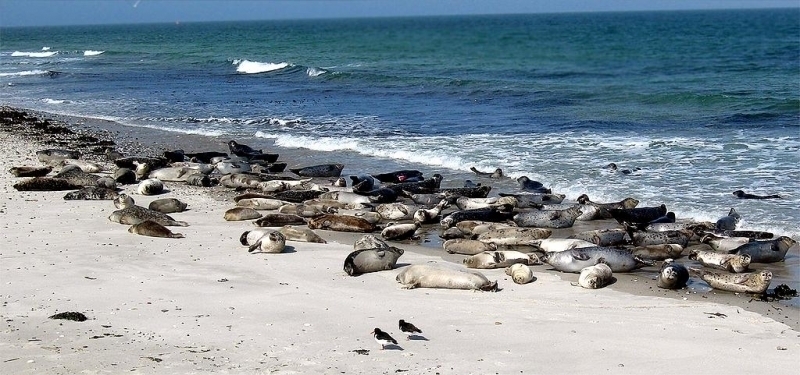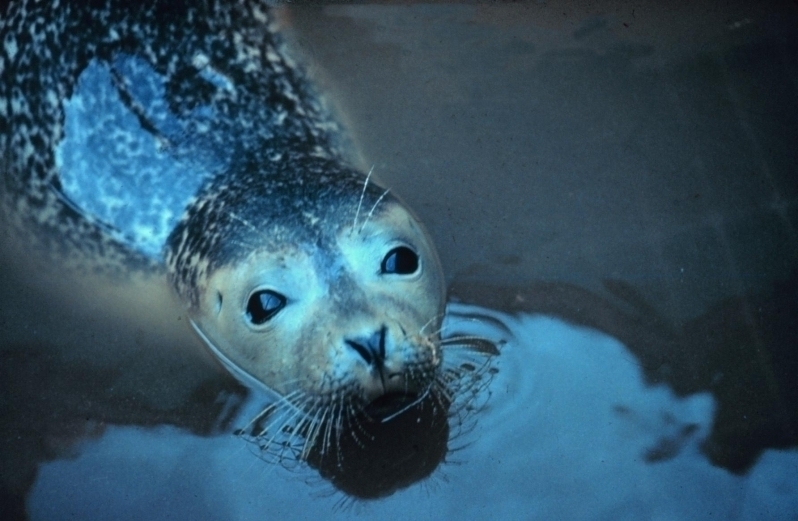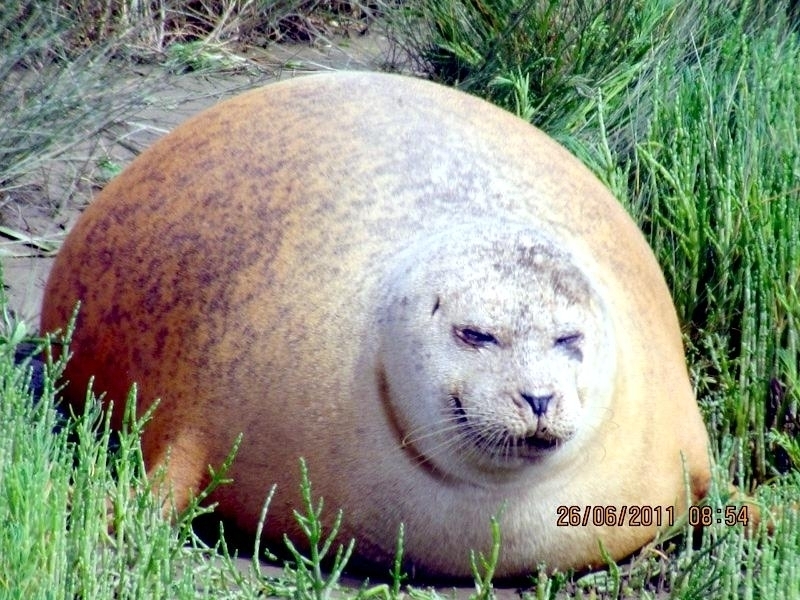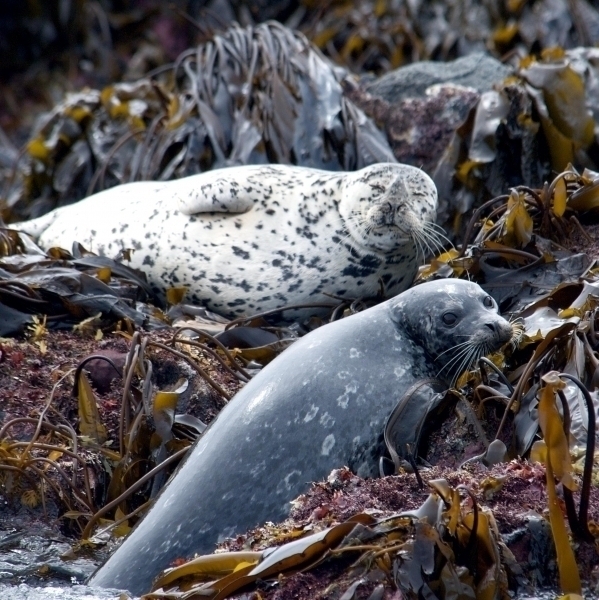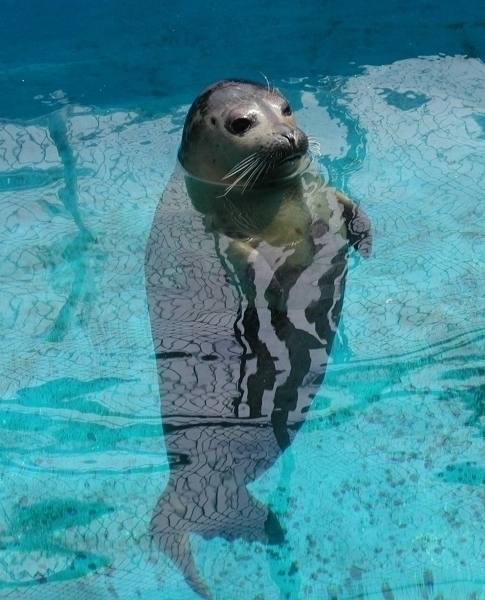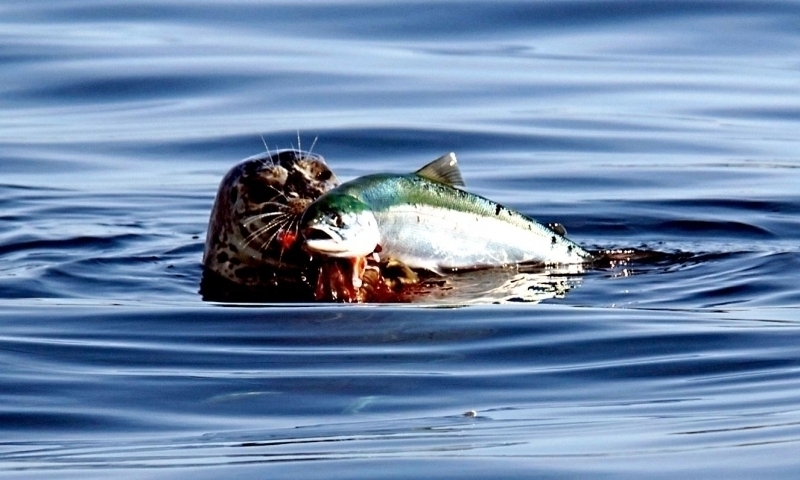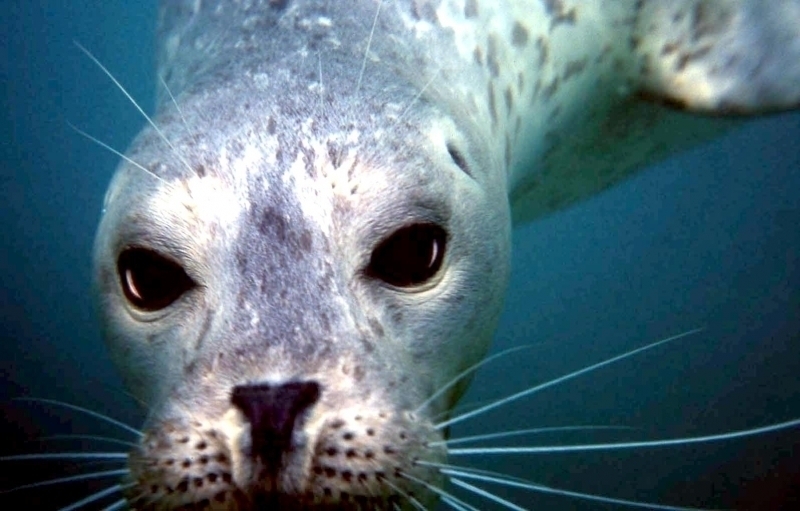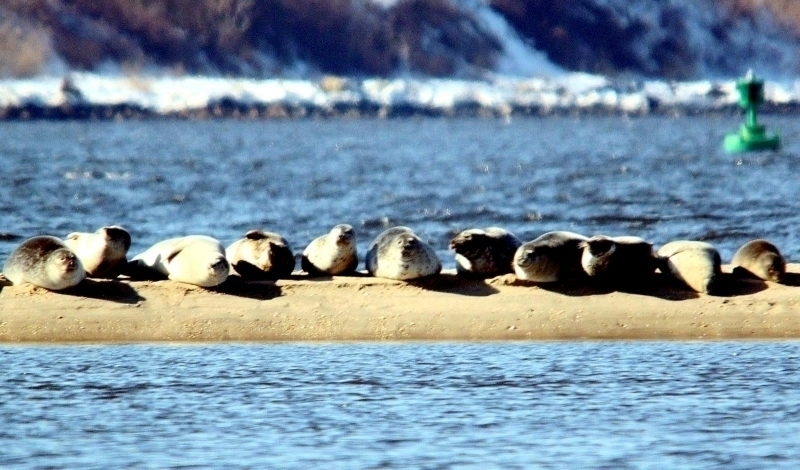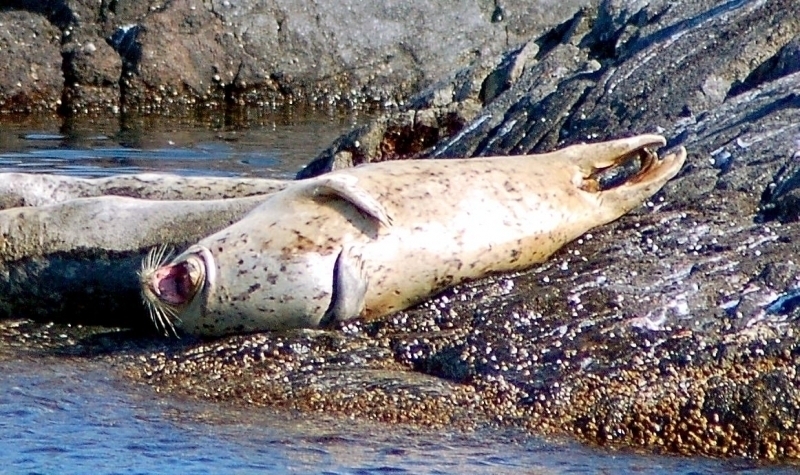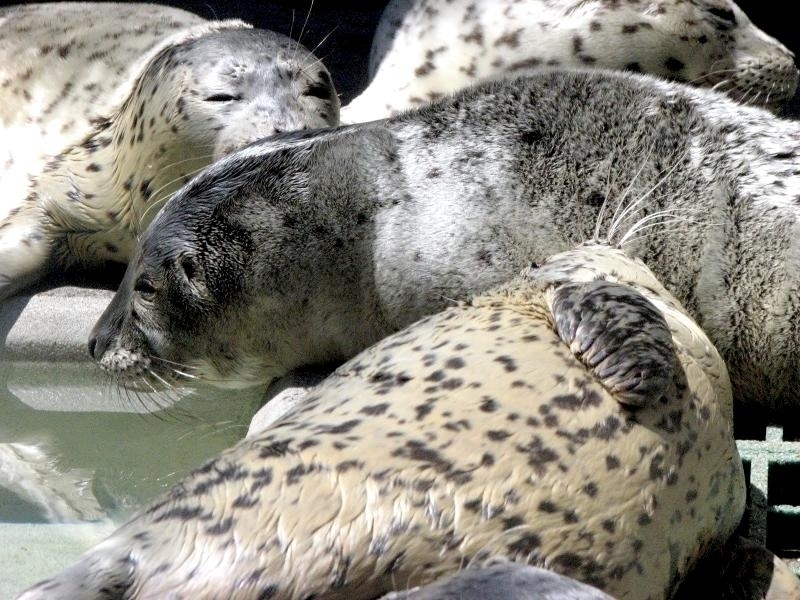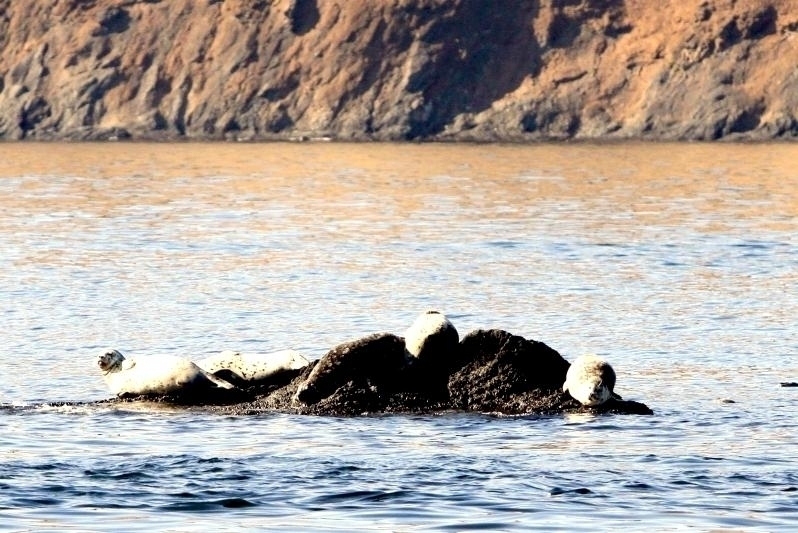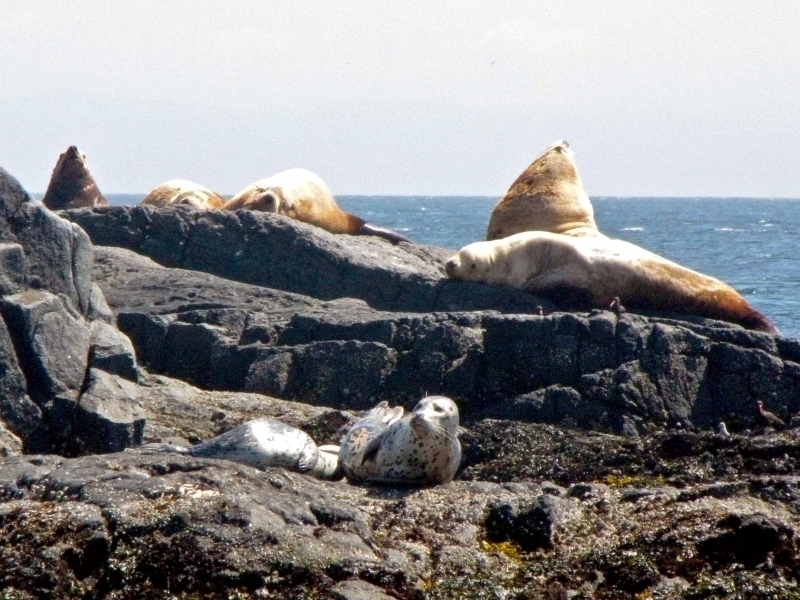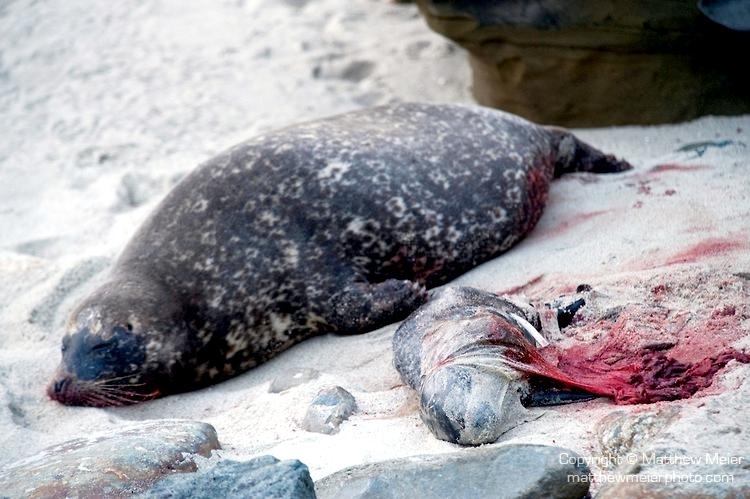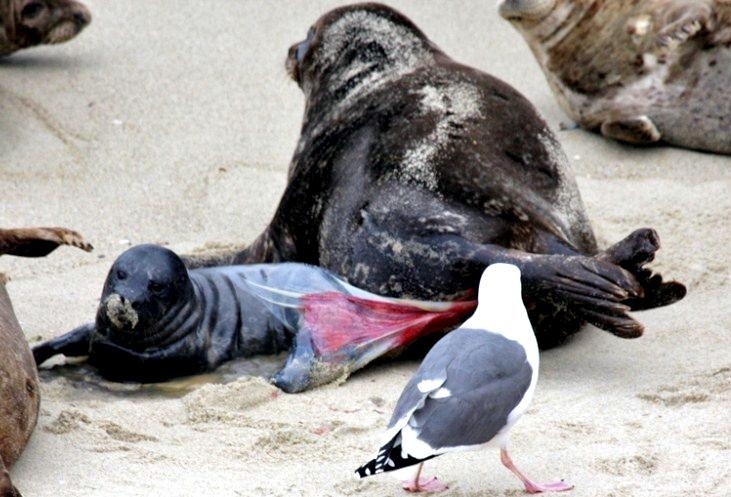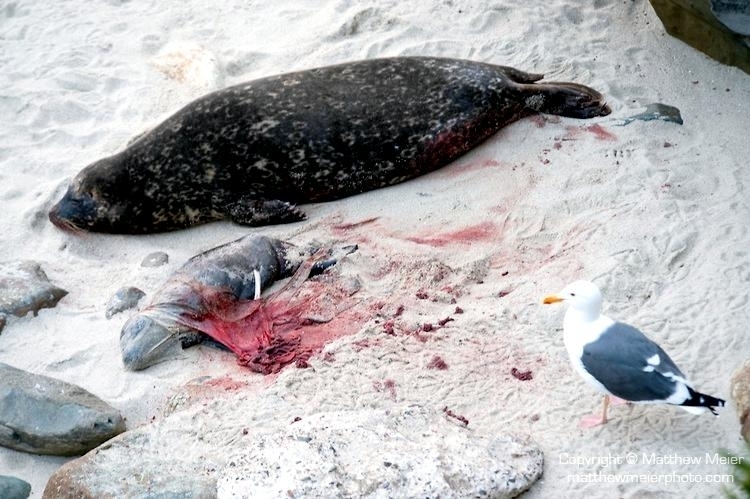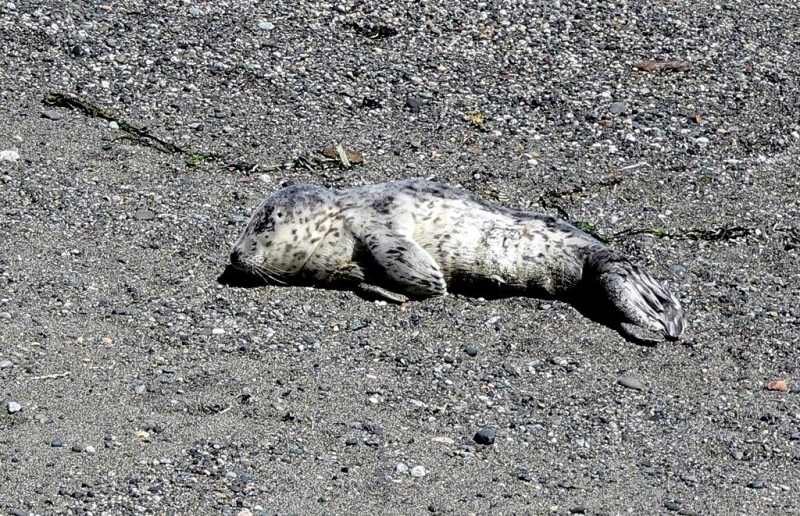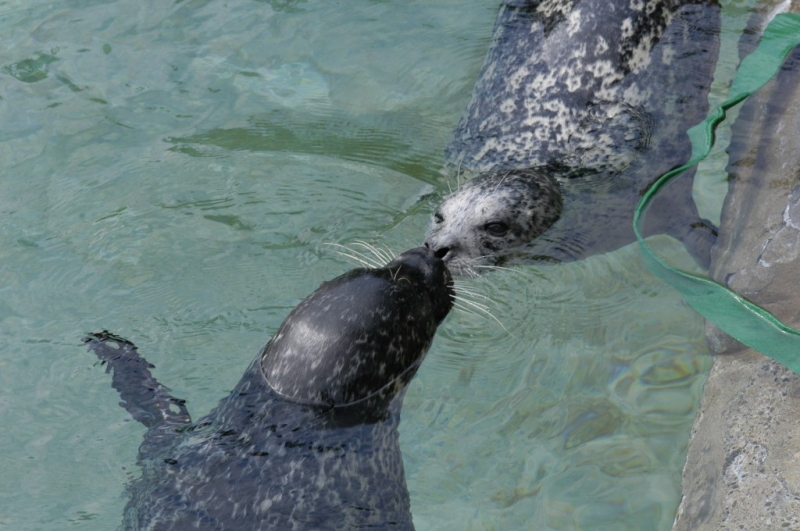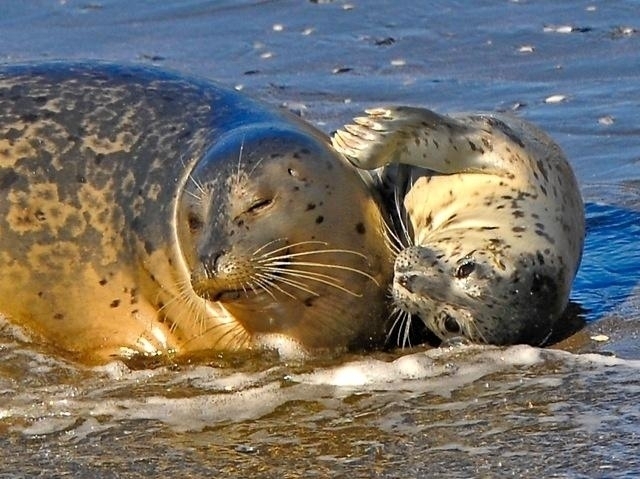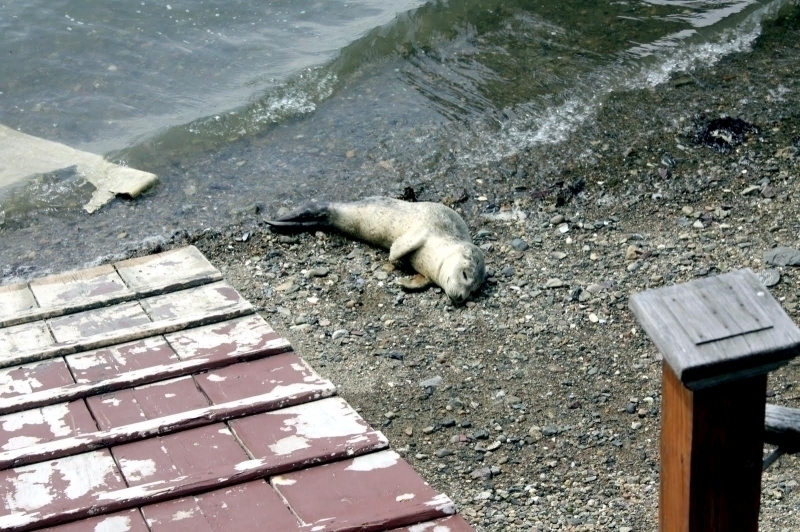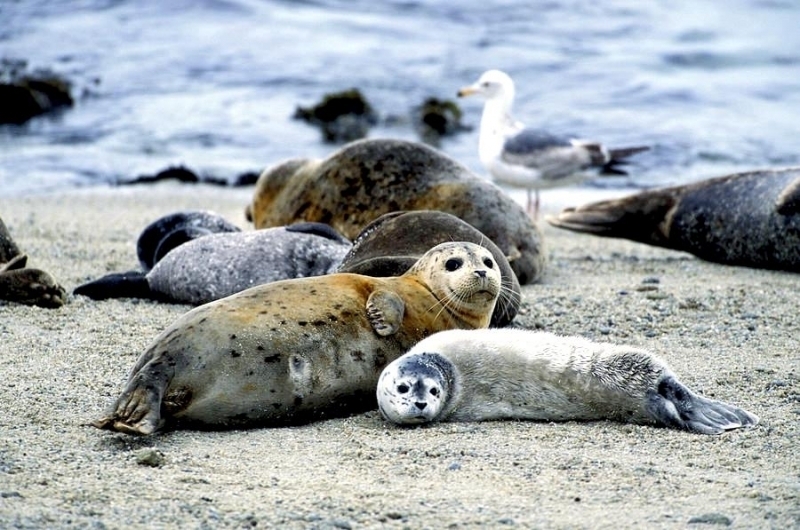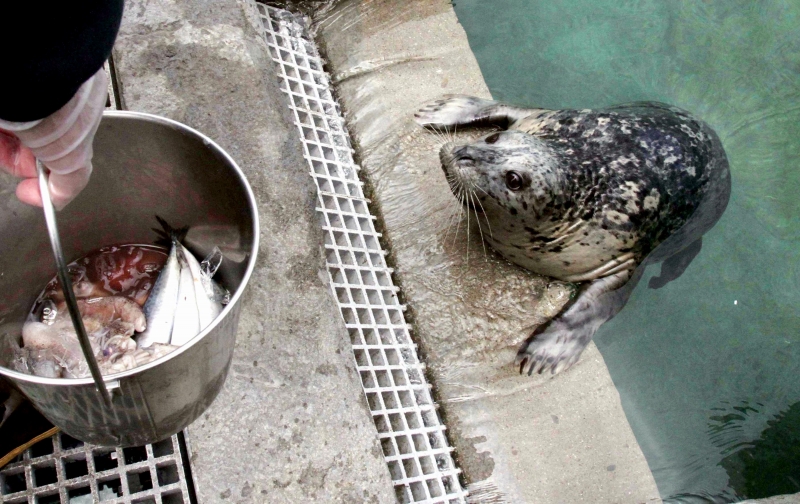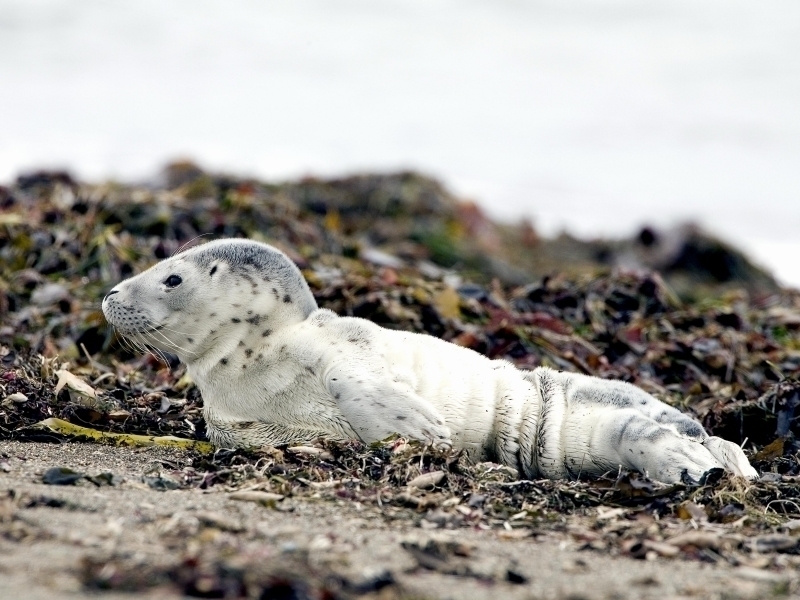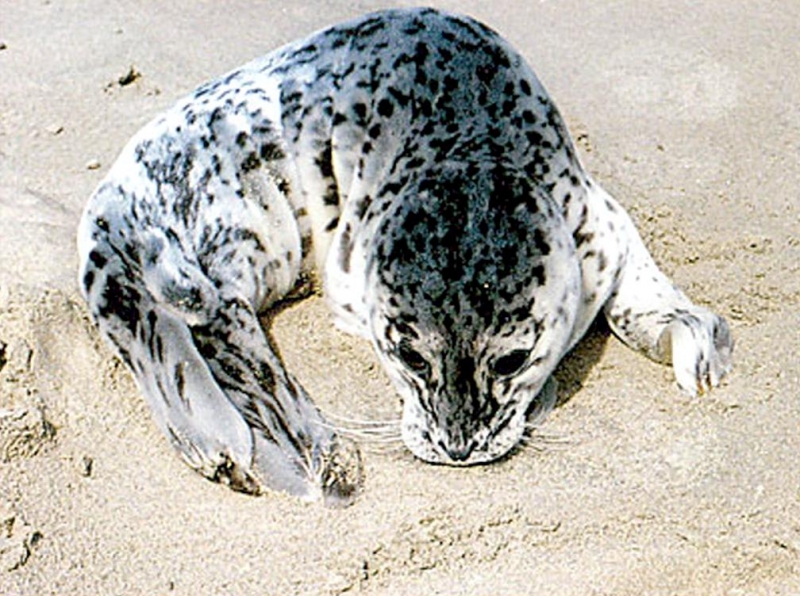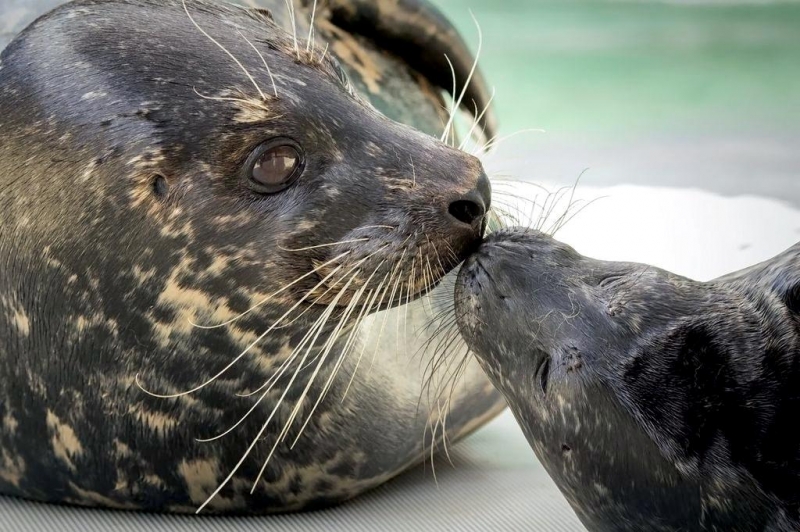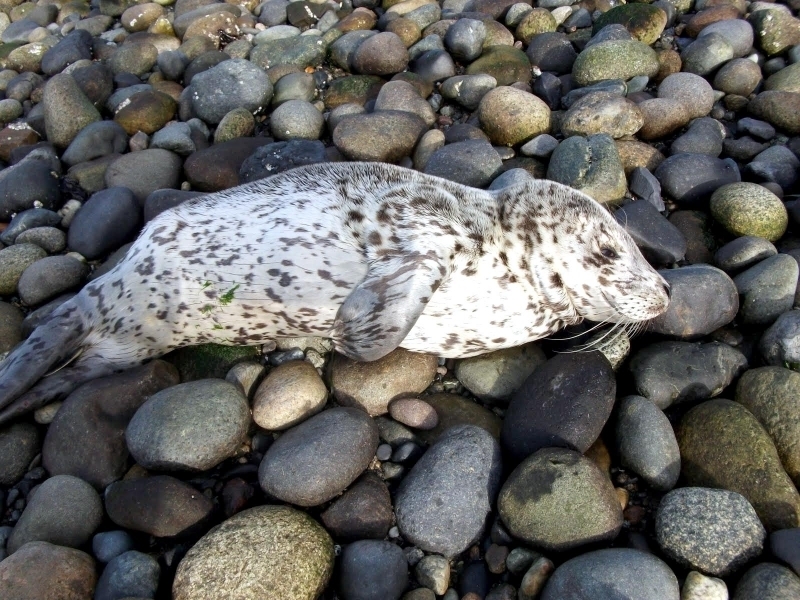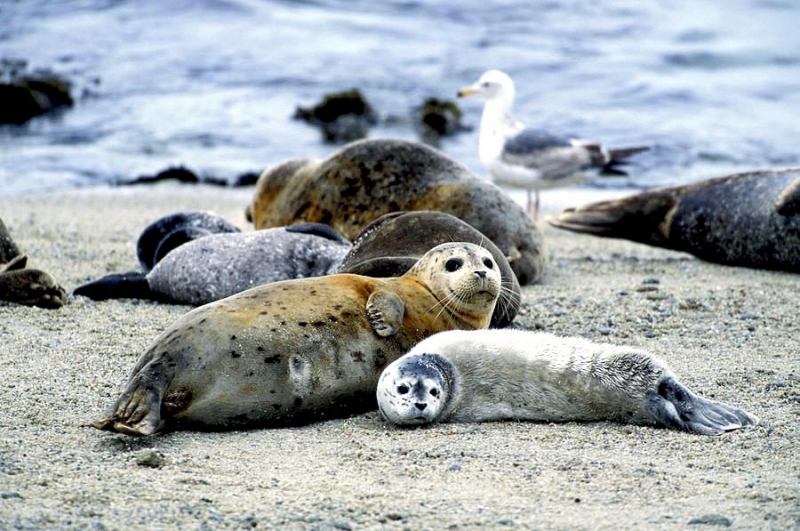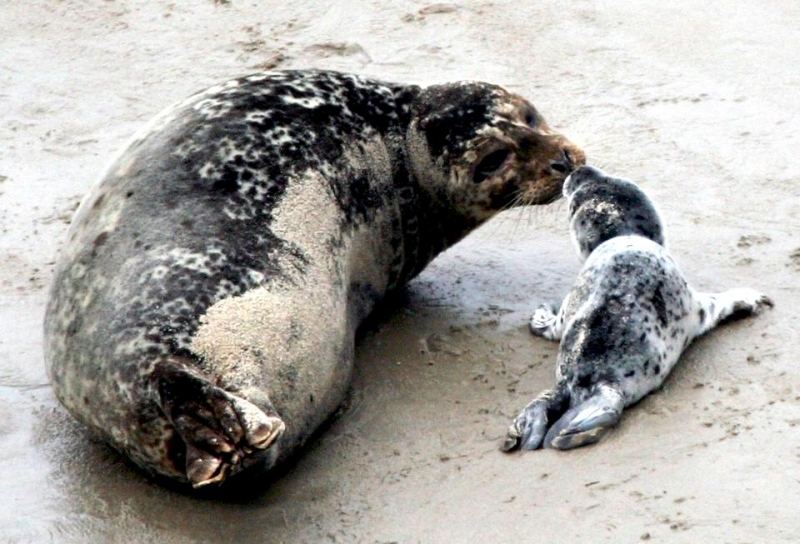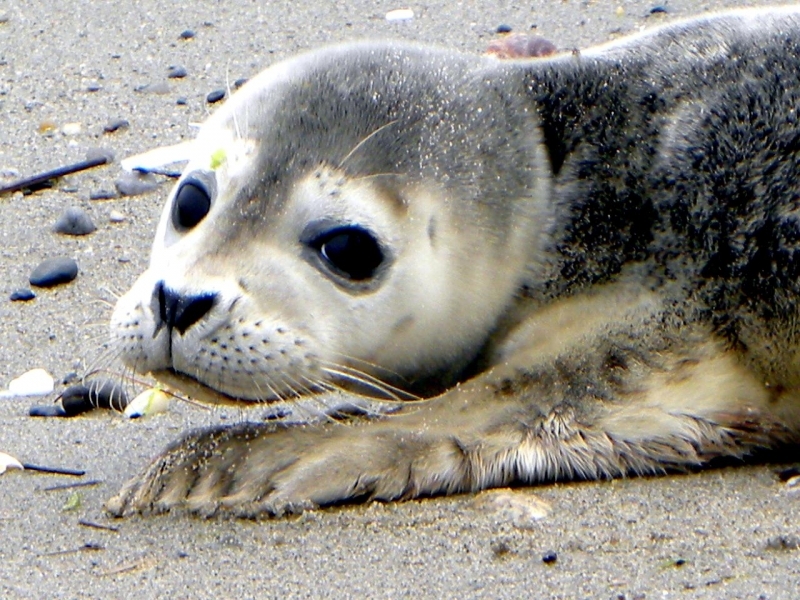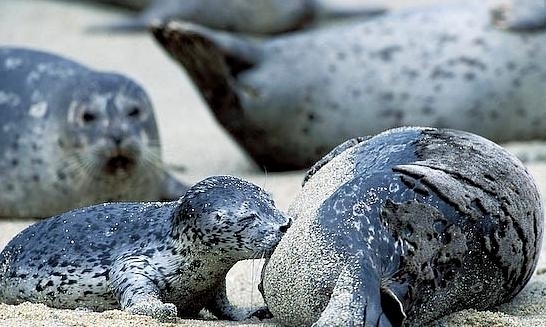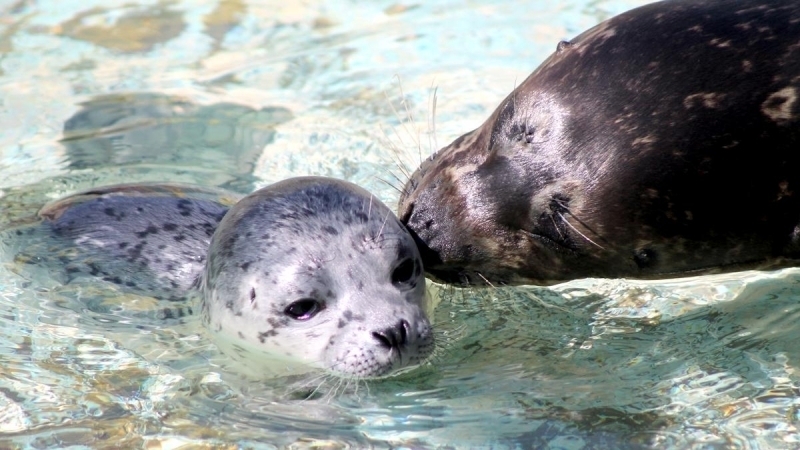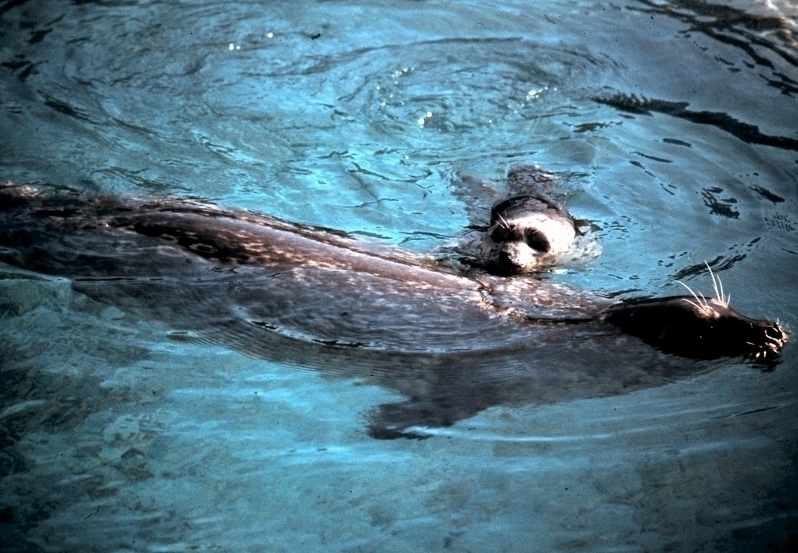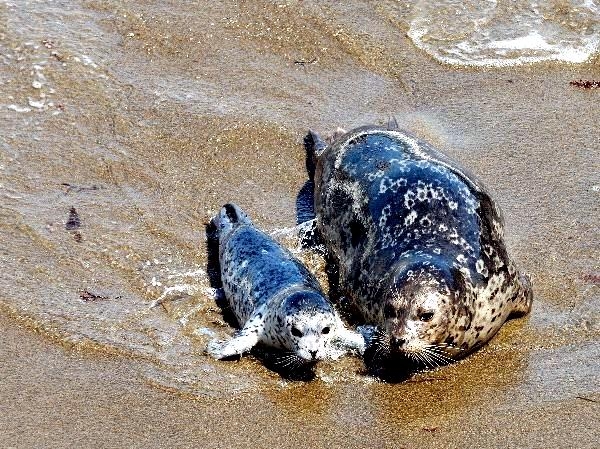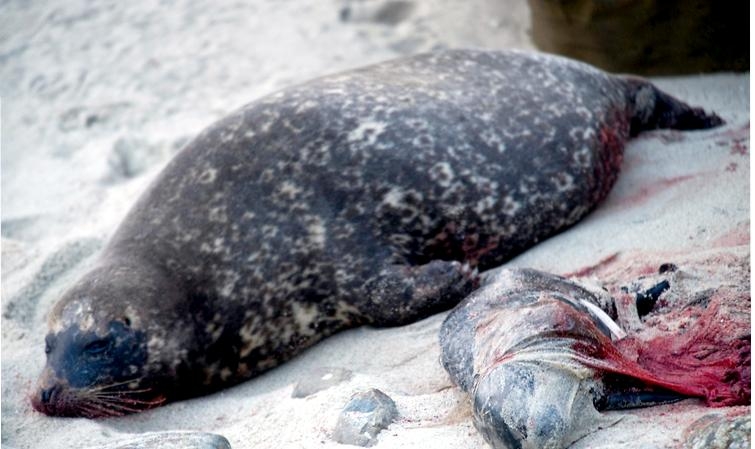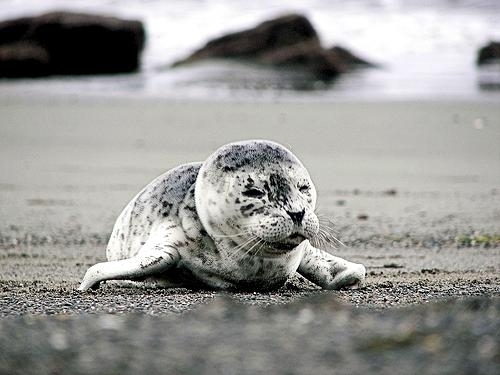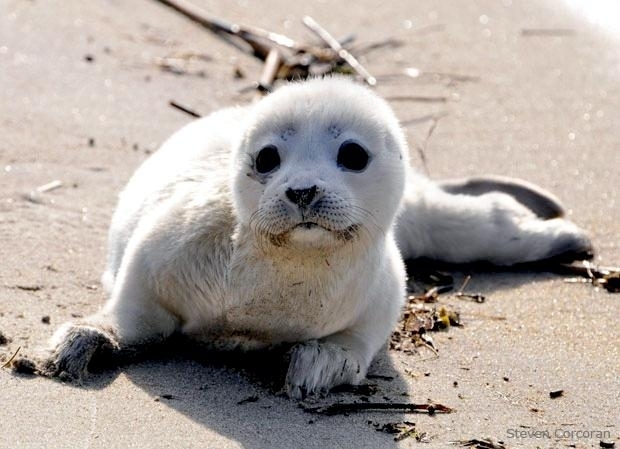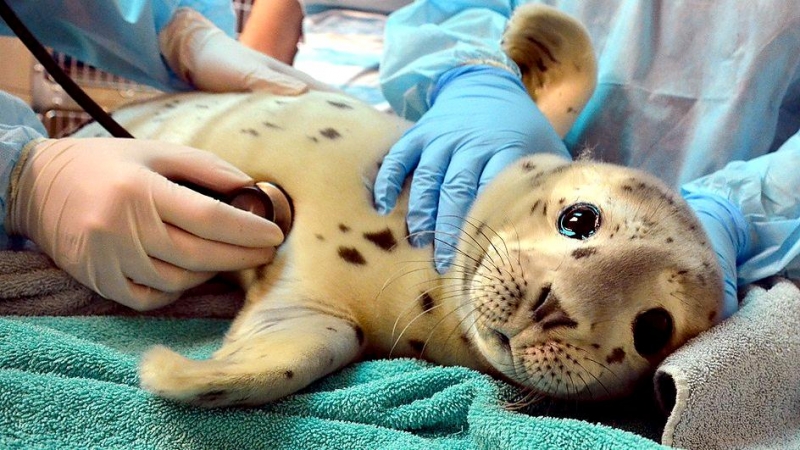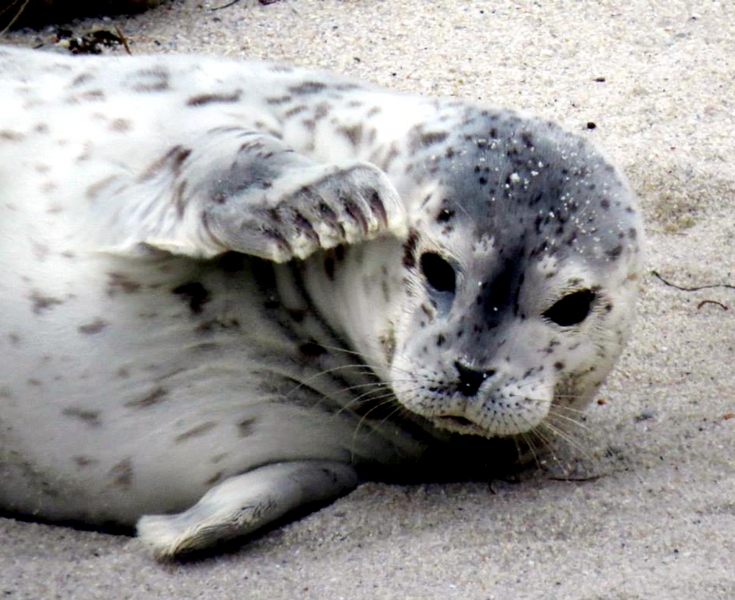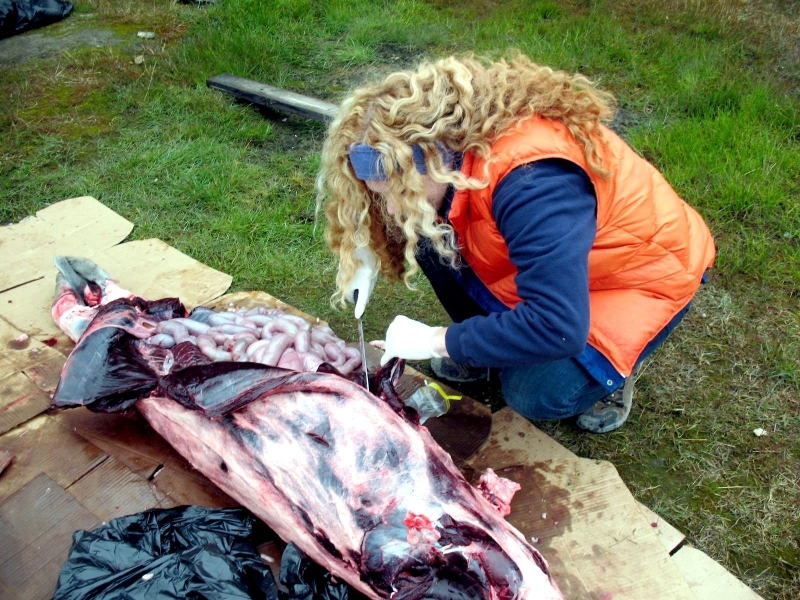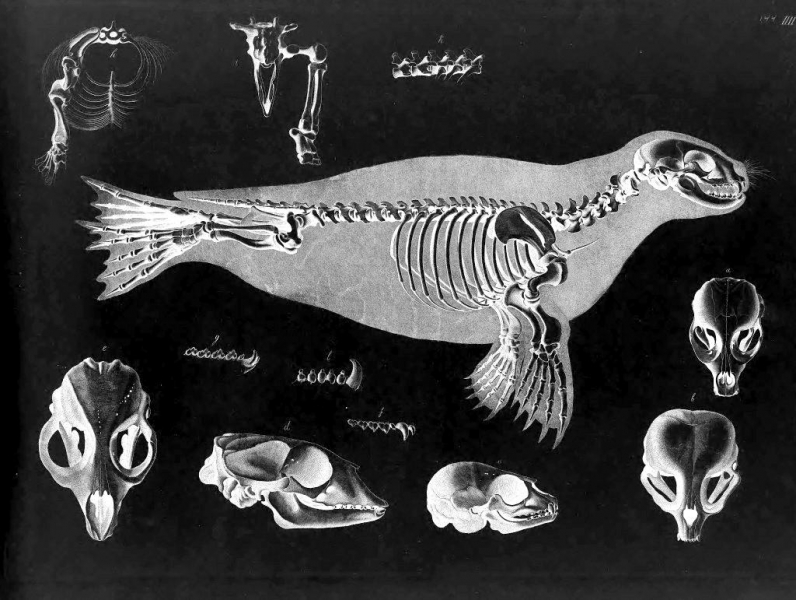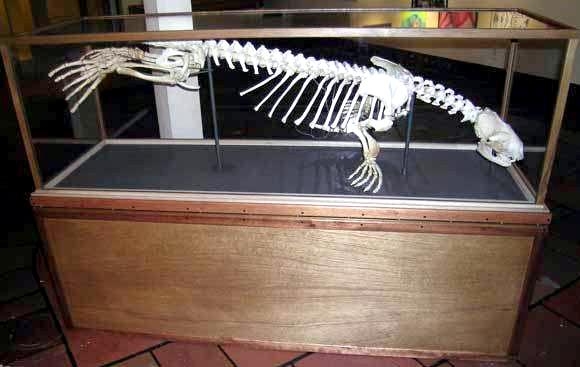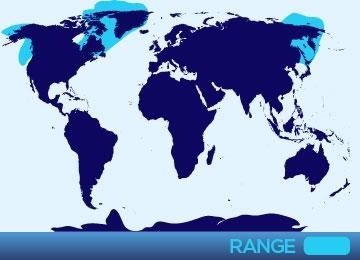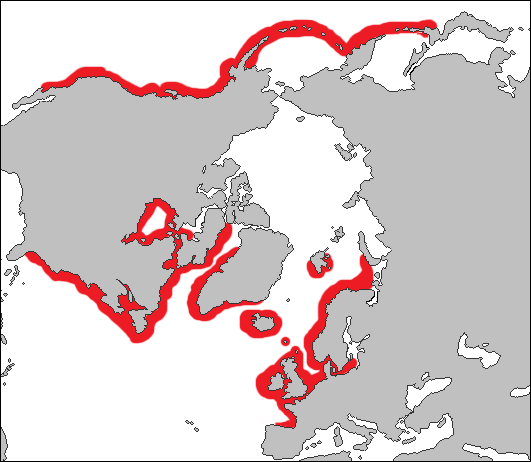“Phoca vitulina”
Harbor Seals are the most common seal species. Alaskan and western Pacific Harbor Seals are significantly larger than seals in the Atlantic Ocean. Generally, adult males measure 1.4-1.9 meters in length and weigh 55-170 kilograms while the slightly smaller adult females measure 1.2-1.7 meters in length and weigh 45-105 kilograms. The coat consists of thick, short hairs ranging in color from white with dark spots to black-dark brown with white rings on the dorsal side. These patterns are unique to each seal, which helps to identify individuals during observational studies. In the San Francisco Bay area, Harbor Seals often have reddish coats caused by iron oxide deposits in their coat. Their pectoral flippers have 5 webbed digits with claws used for scratching, grooming and defense. Their hind flippers also have 5 digits, but these vary in length. The 1st and 5th digits are long & wide and the middle digits are short & thin. Their hind flippers are used to propel the seals forward using a side to side motion. These seals also move by undulating their body on land. Males live an average of 20 years of age compared to the female life span of 25-30 years. Harbor Seals are also the most widely distributed pinniped. They are found in temperate, sub-arctic & arctic coastal areas on both sides of the North Atlantic and North Pacific oceans. Harbor Seals are found in groups only during haul-outs for breeding & molting. Aggressive behavior is demonstrated by growling & snorting, which only occurs when threatened, waving fore-flippers and thrusting the head. Population estimates are poor, however the global population is estimated at over 500,000 seals.
There is much variation in the appearance, physiology and behavior of Harbor Seal species. They generally haul-out in small scattered groups, although in protected bays and estuaries haul-outs can number over 1,000 individuals. Harbor Seals haul-out in small groups during spring but alone or in pairs at the end of summer. A variety of habitats are used for hauling out, including rocky shores, reefs, sand & gravel beaches, inter-tidal mud & sand bars, piers and ice floes. Haul-out sites are selected for protection from land predators, access to deep water and proximity to food sources and protection from wind & waves. It is thought that Harbor Seals haul out in groups for protection against land predation. The timing of haul-outs is often dependent on tidal cycles so that seals can haul-out during low tide. In the absence of tides, the time of day is the major influence on Harbor Seal haul-out behavior. Haul-outs are most common during warmer months. Individuals of the species tend to stay in the same area all year round, however juveniles are known to travel long distances up to 500 kilometers to feed. Harbor Seals tend to stay within 25 kilometers of the shore but individuals are occasionally found 100 kilometers or more offshore. The time of year and duration for molting varies between populations & subspecies and also varies within populations with individuals of varying age, sex and reproductive status. Harbor Seals haul to molt for an average of 12 hours each day compared to 7 hours per day when they are not molting. The metabolism of Harbor Seals is reduced while they are molting, therefore less time is needed foraging for food in the water. The Harbor Seal’s diets vary seasonally & regionally. They primarily feed on crustaceans, mollusks, squid and fish. The food is torn into chunks and swallowed whole. The molars crush shells & crustaceans for swallowing, but food is generally not chewed. Adults consume 5-6% of their body weight or 4.5-8.2 kilograms of food per day. Feeding usually takes place near the shore in shallow water 200 meters deep, most often 100 meters for periods of a few minutes. However, Harbor Seals have sometimes been known to dive more than 500 meters for more than 25 minutes.
Most males reach sexual maturity at 5-6 years of age at a weight of about 75 kilograms. Females reach sexual maturity earlier at 2-5 years or 50 kilograms. Mating season varies between subspecies, but generally in the warmer months. Females are ready to breed about 6 weeks after they give birth. The gestation period lasts between 9-11 months and usually only 1 pup is born each year measuring 70-100 centimeters in length and weighing 8-12 kilograms. Unlike other seal species that molt after they are born, many Harbor Seal pups are born with their adult coat, having shed their light-colored woolly coat before birth. Some pups however, most often pups of younger mothers, are born with their pre-natal coat and molt shortly after birth. Harbor Seal pups can crawl & swim almost immediately after they are born, often within an hour of birth which is useful for pups born in inter-tidal areas. Pups are nursed mostly on land but also in water for about 4 weeks during which time they will gain 0.5-0.7 kilograms per day. The mother makes short feeding trips while she is nursing, for longer periods of time as she begins to wean which is either abrupt or gradual. After weaning, pups disperse often traveling long distances like other seal pup species. Unlike other seal species, mating takes place primarily in the water. Adult male Harbor Seals gather in potential breeding areas and compete by performing aquatic displays, underwater vocalizations and fighting takes place as demonstrated by neck wounds commonly seen during the breeding season. Some researchers believe that the males maintain underwater territories. Males lose up to 25% of their body weight during the breeding season from the energetic requirements of competing and breeding.
